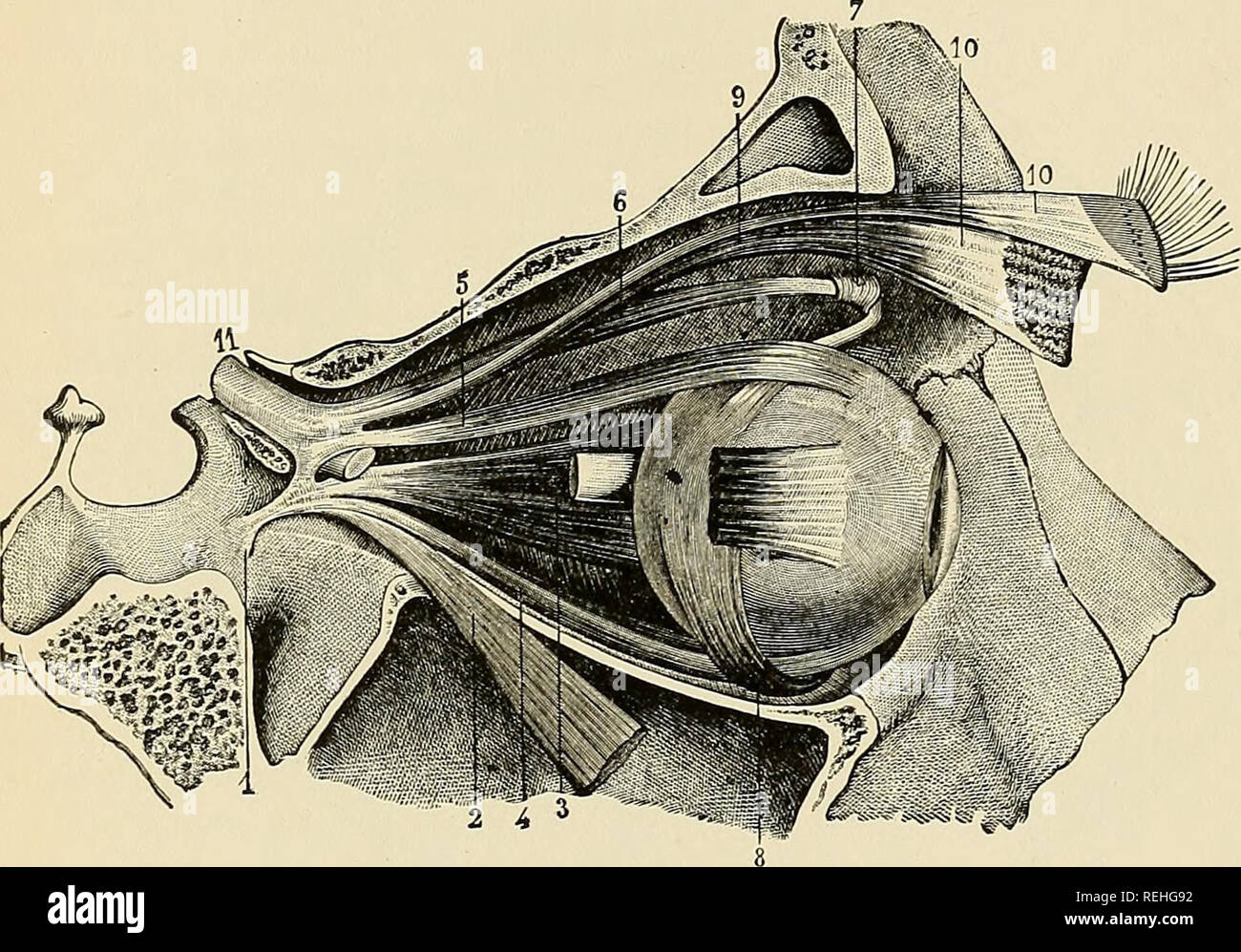. Collected essays and articles on physiology and medicine. Medicine; Physiology. THE EYE AS AN OPTICAL INSTRUMENT 443 the eyelids, the eyelashes keeping away dust and the eye- brows directing away the sweat. Situated thus in the or- bit, the eyes may be moved to the extent of about forty- five degrees; but beyond this it is necessary to move the head. The accuracy of vision depends primarily on the forma- tion of a perfect image upon the retina, which is a mem- brane sensitive to light and connected with the optic nerve. That such an image is actually formed has been demon-. FlG. I.—This figu

Image details
Contributor:
The Book Worm / Alamy Stock PhotoImage ID:
REHG92File size:
7.2 MB (533.9 KB Compressed download)Releases:
Model - no | Property - noDo I need a release?Dimensions:
1892 x 1321 px | 32 x 22.4 cm | 12.6 x 8.8 inches | 150dpiMore information:
This image is a public domain image, which means either that copyright has expired in the image or the copyright holder has waived their copyright. Alamy charges you a fee for access to the high resolution copy of the image.
This image could have imperfections as it’s either historical or reportage.
. Collected essays and articles on physiology and medicine. Medicine; Physiology. THE EYE AS AN OPTICAL INSTRUMENT 443 the eyelids, the eyelashes keeping away dust and the eye- brows directing away the sweat. Situated thus in the or- bit, the eyes may be moved to the extent of about forty- five degrees; but beyond this it is necessary to move the head. The accuracy of vision depends primarily on the forma- tion of a perfect image upon the retina, which is a mem- brane sensitive to light and connected with the optic nerve. That such an image is actually formed has been demon-. FlG. I.—This figure gives a general view of the eyeball, the outer wall of the orbit being removed : i, tendon of origin of three of the muscles of the eye- ball ; 2, the external straight muscle divided and turned down so as to expose the lower straight muscle ; j>, 4, j, 6, 7, 8, muscles moving the eye- ball ; g, 10, 10, muscle which raises the upper eyelid ; u, optic nerve. (After Sappey.) strated by the ophthalmoscope, which enables us to look into the eye and see the image itself. Although the image is inverted, the brain takes no cognizance of this, and every object is appreciated in its actual position. The im- age is formed in the eye in the way in which an image is produced and thrown on a screen by a magic lantern. When a ray of light passes obliquely from the air through glass, water or other transparent media, it is bent, or refracted, and the angle at which it is bent is called. Please note that these images are extracted from scanned page images that may have been digitally enhanced for readability - coloration and appearance of these illustrations may not perfectly resemble the original work.. Flint, Austin. New York : Appleton